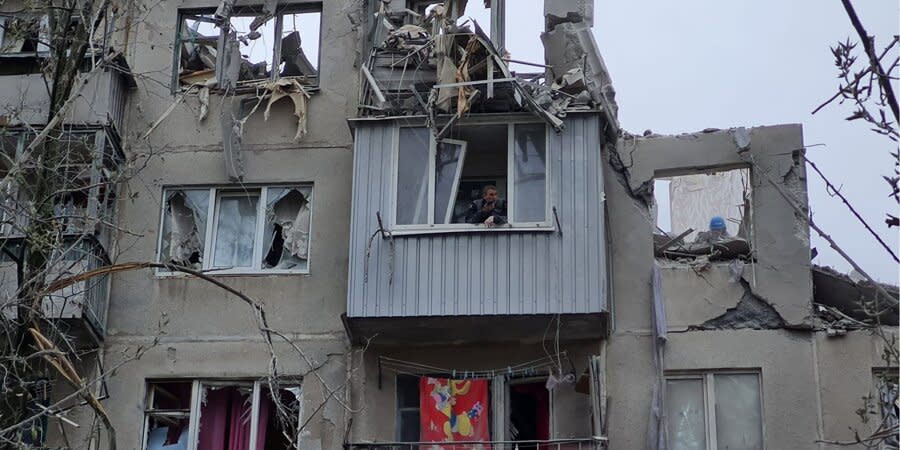Increased frontline air strikes, isolated guerrilla warfare inside Russia, uptick in PsyOps — Kyiv Security Forum report

Kyiv Security Forum experts look at the major developments in the war over the past week.
Psychological confrontation has escalated
Over the past week, psychological warfare has intensified on several levels.
Controversial publications around the world have taken the global discussion about the prospects for Ukraine's counteroffensive up a notch. Ukrainian and American officials are being forced to comment more often on the adequacy of Western aid, the pace of preparation of Ukrainian reserves, and other relevant matters. Cautiously pessimistic assessments have also emerged, though not always factual.
Read also: One year ago today, Ukraine sunk the Russian flagship Moskva
This situation is certainly distractive for Ukraine’s military and political leadership as it draws them into a reactive stance. On the other hand, the massive discussion of the purely military aspects of the situation has outweighed — though not displaced — the discussion of "immediate peace" proposals advocated by China and France.
Read also: Wagner’s Prigozhin proposes Russia ends war in Ukraine
Russian propagandists released footage of the brutal killing of Ukrainian prisoners of war.
One of the most important consequences of this action will be the demotivation of Russian soldiers who are ready to surrender. By releasing the video, the enemy could hope to provoke the maltreatment of captured Russian soldiers or kickstart another wave of fakes about "Ukrainian atrocities against prisoners."
This week, the Russian regime introduced "electronic summonses" — a harsh measure taken by the Kremlin against Russian citizens who evade mobilization. In this case, it is effectively used as a psychological operation (psyop).
On the one hand, the Kremlin is forced to expand the scale of mobilization, proving to the population its own failure in the war and the reality of defeat. On the other hand, it dispels any illusions about Putin's willingness to negotiate, which should serve as a reminder to those international actors that deliberately or blindly continue to insist on a dialogue with the Kremlin.
Read also: Russia transferring Soviet weapons to western Crimea
Russia intensifies airstrikes in frontline areas
The main military trend of the past week has been the intensification of Russian airstrikes on the frontline and border areas of Ukraine. Enemy fighters launch missiles and precision-guided bombs from several to several dozens of kilometers away. The Ukrainian Armed Forces Command reports at least 15 such strikes daily. On April 10, 39 enemy airstrikes were recorded.
Such attacks most often occurred in the border areas of Sumy and Chernihiv oblasts, as well as in certain areas of the frontline in Donbas. Russian fighter jets also carried out large-scale strikes on liberated areas in Kherson Oblast.
Read also: Hungary backs away from Russia-backed bank following U.S. sanctions
The Ukrainian Air Force continues to conduct daily airstrikes on enemy positions on the frontline, but with less intensity. Based on the operational reports of the General Staff, Ukraine averages half as many strikes as Russia.
This is a continuation of the threatening trend noted in KSF’s previous military review. As Ukraine’s Air Force commander noted last week, "the Air Force does not have enough forces and means to effectively protect the airspace, troops on the front line, and civilians in the frontline zone."
The factors behind the growing aerial threat may include both the enemy's active use of new weapons (glider bombs) and the Russian command's decision to take on more risk with their fighters and pilots. There was no new reliable information on the merits of these factors this week.
Low-intensity guerrilla warfare continues across Russia
Like last week, low-intensity guerrilla warfare continued in different regions of Russia. Isolated clashes continue in Ingushetia. There have been multiple reports of deliberate damage to railway infrastructure (sometimes with significant disruption of train traffic) and military commissariats.
This guerrilla movement has not yet affected the enemy's military capabilities, but it does destabilize the military and political situation in Russia.
This week, Russian Security Council Secretary Nikolai Patrushev (the second in command of Putin's regime) was forced to publicly admit that "the activities of conspired terrorist and radical organizations are intensifying in the North Caucasus" and that "attempts to introduce Sharia law are continuing."
We’re bringing the voice of Ukraine to the world. Support us with a one-time donation, or become a Patron!
Read the original article on The New Voice of Ukraine

